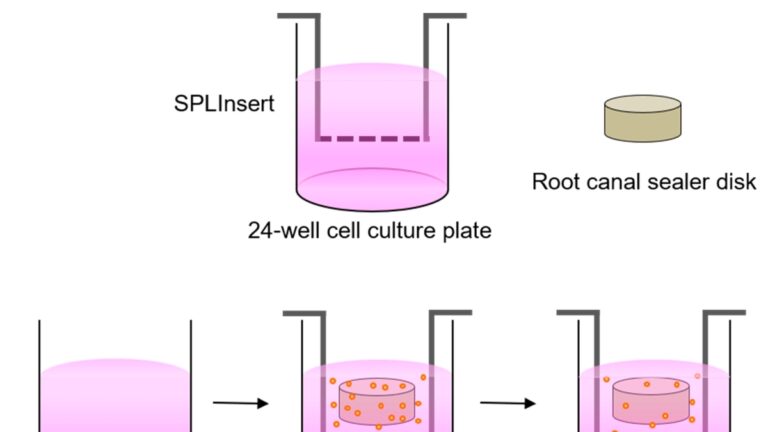The field of endodontics is constantly evolving, with ongoing research and development aimed at improving treatment outcomes, patient comfort and overall oral health. A key aspect of this progress is the development and evaluation of endodontic materials, especially sealants. Endodontic sealants play a vital role in root canal treatment by helping to eliminate bacteria and fill gaps in the root canal system. However, the biocompatibility of these sealers is a critical factor to consider as it directly affects the success of endodontic treatment.
Evaluation of Biocompatibility of Endodontic Sealants
A recent study focused on evaluating the biocompatibility of various endodontic sealants using several in vitro tests. Parameters evaluated in the study included cytotoxicity, genotoxicity, apoptosis and cell cycle progression. The study used two cell lines to evaluate both local and systemic effects, providing valuable insights into material selection in endodontic treatments. The study findings rejected the null hypothesis, revealing statistically significant differences in cytotoxicity and genotoxicity among the tested sealants.
In particular, the research showed that AH Plus showed non-cytotoxicity, while BioRoot Flow showed local moderate cytotoxicity and possible genotoxicity. BioRoot RCS was found to be less toxic compared to zinc oxide materials, however it showed higher cytotoxicity than AH Plus. Interestingly, TotalFill BC Sealer showed neither cytotoxicity nor genotoxicity. These findings highlight the need for careful selection of endodontic sealants to ensure the best possible results from endodontic treatments.
Properties of Cement-Based Calcium Silicate Endodontic Sealants
Further information on endodontic sealant properties is provided by a study on the physicochemical properties of calcium silicate cement-based endodontic sealants. This research focused on bioactivity, clotting time and radioactivity values. It was found that bioceramic sealants showed high solubility, which could affect the quality of root canal fillings. The study also highlighted the importance of bioactive sealants in promoting healing when in contact with periapical tissues and their antibacterial activity.
Retreatment strategies and challenges
Another critical aspect of endodontics is the retreatment of cases filled with calcium silicate root canal sealants. Removal of these sealants poses significant challenges and comprehensive research is needed to develop effective reprocessing strategies. A detailed review of such strategies provided valuable future directions for research in this area.
Comparison of bioceramics and calcium hydroxide-based drugs
A study comparing the biocompatibility of Bio C Temp, a bioceramic endodontic material, with Calen, a calcium hydroxide-based drug, in rat subcutaneous tissue showed that Bio C Temp caused an increase in alkaline phosphatase (ALP), osteocalcin and osteopontin. indicates bioactive potential. This research further highlights the importance of bioactive materials in endodontic therapy.
The Evolution of Endodontic Materials
The field of endodontics continues to evolve, with ongoing research focusing on bioactive materials for tissue regeneration and healing, as well as the use of nanoparticles for enhanced antimicrobial properties. Materials such as gutta-percha, resin-based sealants, bioceramic sealants, MTAs, and zinc oxide-eugenol sealants offer unique advantages and disadvantages. In addition, innovations in delivery systems and techniques are also contributing to the evolution of endodontic treatment.
In conclusion, the biocompatibility of endodontic sealants is an integral aspect of successful endodontic treatment. Continuous research and development in this field aims to provide better materials that can improve treatment outcomes and patient comfort, thereby improving overall oral health.


